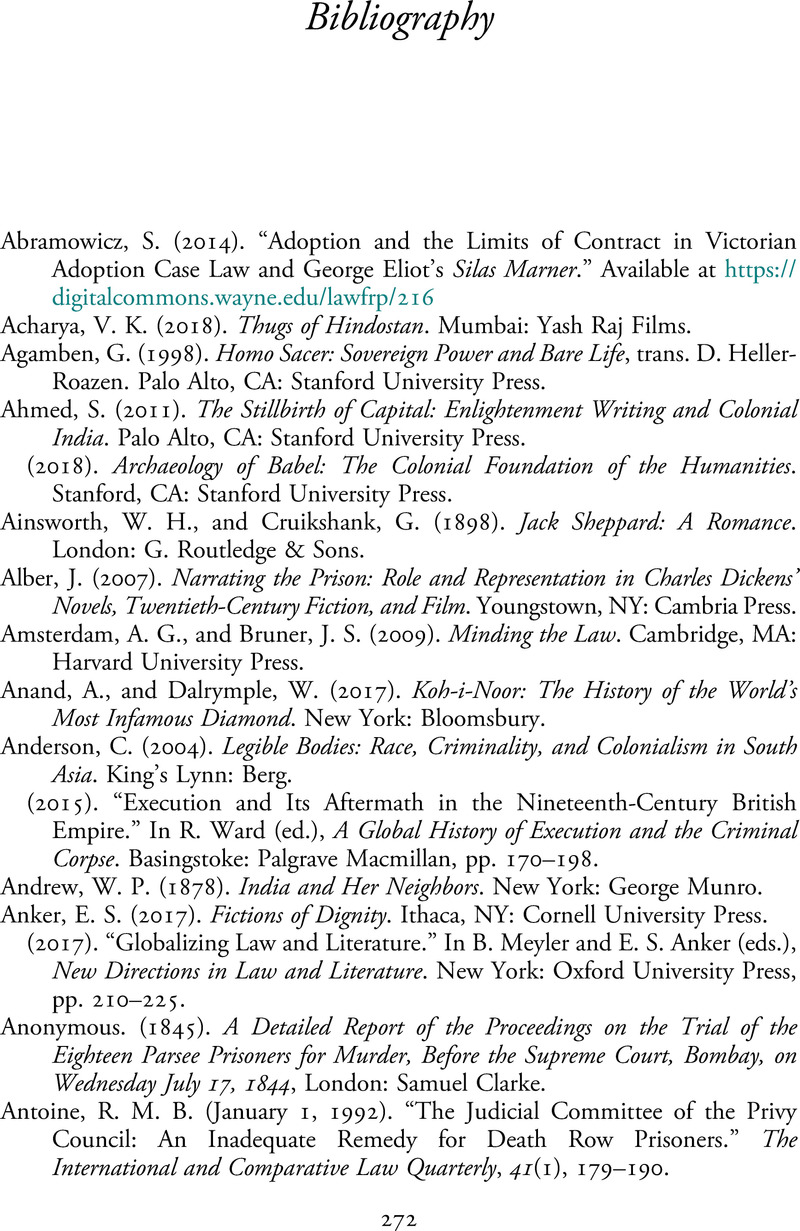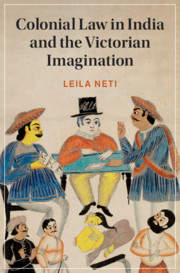Book contents
- Colonial Law in India and the Victorian Imagination
- Cambridge Studies in Nineteenth-Century Literature and Culture
- Colonial Law in India and the Victorian Imagination
- Copyright page
- Dedication
- Contents
- Acknowledgments
- Introduction
- Part I Criminality
- Part II Temporality
- Part III Adoption and Inheritance
- Afterword
- Notes
- Bibliography
- Index
- References
Bibliography
Published online by Cambridge University Press: 02 April 2021
- Colonial Law in India and the Victorian Imagination
- Cambridge Studies in Nineteenth-Century Literature and Culture
- Colonial Law in India and the Victorian Imagination
- Copyright page
- Dedication
- Contents
- Acknowledgments
- Introduction
- Part I Criminality
- Part II Temporality
- Part III Adoption and Inheritance
- Afterword
- Notes
- Bibliography
- Index
- References
Summary

- Type
- Chapter
- Information
- Colonial Law in India and the Victorian Imagination , pp. 272 - 288Publisher: Cambridge University PressPrint publication year: 2021



